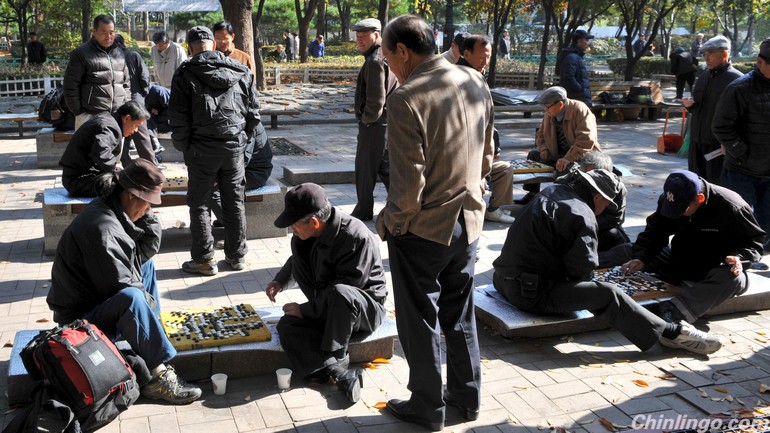
The fiscal constraints related to ageing
are well known, caused mainly by spiraling healthcare and pension costs.
However, the repercussions are much wider. In an ageing society, labor
markets, saving patterns and migration flows will change. Most
worryingly, labor shortages, declining labor market flexibility and
slowing productivity pose a serious threat to growth.
老龄化对国家财政的影响众所周知——节节高攀的医疗保险和养老金支出会对国家财政造成巨大影响。然而,老龄化的影响远不止于此。老龄化社会里,劳动力市
场、储蓄方式以及人口流动都会发生变化。最令人担忧的是,劳动力短缺,劳动力市场不稳定,生产力下降等问题会对发展造成严重威胁。
In the past three decades, a dramatic increase in life expectancy
underpinned by the strict family planning policy prompted the greatest
demographic transition in the world. During three decades of economic
expansion, China's growing workforce added a "demographic dividend" of
about 2 percent a year to GDP.
过去三十年中,由于严格的计划生育政策,因而人们的平均寿命延长,继而产生了世界上最大的人口结构转变。在中国经济发展迅猛的三十年里,持续增长的劳动力每年会为GDP贡献2%的红利。
With rapid ageing, the situation has now reversed. The demographic
dividend is vanishing, while the dependency ratio of children and
elderly on the working age population is increasing. The labor force
shrank for the first time in 2012. By 2050, about 30 percent of the
population will be above 60, against a world average of 22 percent.
但如今人口日益老龄化,情况发生了改变。人口红利逐渐消失,劳动力人口需承担的人口抚养比例在逐年增加。劳动力市场于2012年首次缩小。到2050年时,中国60岁以上人群将占到总人口的30%,而世界平均比例只有22%。ageing in China is particularly complex because it is happening at a
low-income level. Social safety nets are weak, with most of the elderly
depending on family support. Declining family size and the erosion of
traditional values magnify the challenge and place a heavy burden on
small households.
中国人口老龄化问题尤其复杂,因为中国平均收入水平仍然停留在低收入阶段。社会保障制度并不健全,多数老年人都依靠家人赡养。小家庭增多、敬养老人等传统价值观的缺失,都使老龄化问题更加严重,并对中小家庭造成了沉重负担。
High-income countries have offset the
losses caused by a declining workforce by adopting innovation-driven
growth models. China could achieve the same by decisively rebalancing
the economy, shifting to consumption-led growth and developing the
services sector.
高收入水平国家采取创新型发展模式,以此弥补劳动力减少对经济的损失。中国同样能够采取平衡经济发展、转型为消费拉动增长模式、发展服务业等措施,来弥补损失。ageing also requires specific policy measures. The new leadership needs to focus on three issues.
老龄化问题还需要制定专门的政策。新任领导人需要关注三大问题有:
First, support systems for the elderly require comprehensive reform. A
program for old-age income support and healthcare is needed, financed
through tax revenue. Financing should be based on accurate actuarial
projections, with benefits and contributions designed to be sustainable.
Initially the system could prioritize the elderly, poor and those with
functional dependencies, rather than providing far costlier universal
benefits. At a later stage, the coverage could be expanded.
首先,老年人赡养体系需要进行全面综合的改革。必须提出一个保障老年人收入和医疗保险的计划,由财政税收提供资金。财政资金的提供应基于准确的精算评估,
使保险金支出与分配可持续。初始阶段系统只需覆盖老年人、贫困人群以及无力抚养老人的家庭,而非涵盖所有人群。后期阶段可扩大该系统覆盖范围。
The pension system has recently been strengthened, but much more is
required. While coverage has been expanded, benefits are very low, and
the system is financially weak. In addition to structural reform, the
underfunded social security sector needs a large upfront financial
injection. The 2-percent increase in social security expenditure planned
by 2015 is insufficient.
近来,养老金体系有所完善,但远不完备。虽然养老金覆盖范围扩大,但是收益非常低,财政支出也不够。除了结构改革,资金不足的社会保障系统需要大量的财政投入,并且应该公开支出明细。国家计划到2015年时,对社保的支出提高2%,但这是不够的。
Strengthening pensions also requires financial liberalization. A more
sophisticated financial system, including a wider range of investment
options and an open regulatory framework, would lay the foundation for
the establishment of private pension funds to complement government
efforts.
完善养老金系统还必须放宽金融政策。一个更为细密复杂的金融体系,包括投资机会拓宽,一个开放的规范体系,将为私人养老基金的建立打下基础,进而弥补政府的不足。
Second, labor markets need to be opened and the workforce expanded. The
household registration (hukou) system and restrictions on the
portability of social benefits hinder migration, geographical mobility
and, ultimately, urbanization. Compounded by skill shortages, they
impede China's movement up the value chain. The 12th Five-Year Plan
(2011-15) envisages a gradual dismantling of the hukou system, and the
new leaders have indicated their intention to improve living conditions
for China's 220 million migrant workers. These efforts should be
accelerated.
其次,开发劳动力市场,拓宽劳动力来源。户籍制度以及禁止在非户籍地享受社保阻碍了人口迁移和地域移动,最终妨碍城市化进程。加之技术型人才的缺失,阻挡
了中国在价值链条中的上移。十二五规划设想逐渐消除户口制度,并且新任领导人们也意欲提高2亿2千万农民工的生活状况。这方面努力应当加快。
In line with high-income countries, China should also consider raising
the retirement age. The current general retirement ages, 60 for men and
55 for women, date back to 1950, when life expectancy was much lower.
China may also need to consider other measures to increase labor supply,
such as reviewing immigration policies.
为了赶上高收入国家,中国还应考虑延后退休年龄。中国目前的退休年龄为男性60岁退休,女性55岁,始于1950年,然而那时的平均寿命远低于现在。中国还需考虑其他增加劳动力来源的方法,例如修改移民政策。
Third, workers' skills need strengthening, and productivity and
innovation need to be enhanced. Otherwise, deficits in the labor force
will erode the country's competitiveness, reducing exports and economic
growth. Substantial investments in research and development and a shift
toward student-centered education are essential to increase labor
productivity and support innovation.
第三,劳动者的技术水平、生产效率以及创新能力有待提高,否则,劳动者的缺陷会危及国家的竞争力,减少出口,并减缓经济发展。加大研究与发展领域的投资,并且转换为以学生为中心的教育模式,是提高劳动力生产效率以及支持创新的关键。
As production becomes more sophisticated,
the technical and vocational skills of the workforce are increasingly
important. Skill development must be aligned with labor market needs and
help companies respond flexibly to changing circumstances. China
currently suffers from skill shortages in several sectors, and a rapidly
ageing population is likely to reduce labor market flexibility.
随着生产的复杂化、高端化,劳动者的技术能力和职业能力越发重要。提高劳动者的技术必须适应劳动力市场的需求,帮助企业灵活应对千变万化的市场。现有许多领域都缺乏技术劳动力,并且,人口快速老龄化可能降低劳动力市场灵活性。
Greater investments in human development will result in higher labor
productivity and help indigenous innovation to take root. High literacy
rates and universal primary education are not sufficient for China to
raise incomes. Tertiary education, and technical and vocational
education need to be aligned with the country's development strategy,
supported by private and public initiatives. The government must ensure
that all income groups have an opportunity to acquire the skills
demanded by innovation-driven growth.
加大人才培养投资将提高劳动生产力,并有助于本土创新发明生根发芽。低文盲率和小学义务教育不足以增加中国人的收入。高等教育以及技术教育和职业教育,要
由国家与民间的力量共同支持, 要与国家发展策略相一致。创新型发展需要技术支持,政府必须保证各收入人群都有学习技术的机会。
The new leadership has embraced the need for reform. China's strong
fiscal position provides ample room to finance the transition to
consumption-based growth, supported by increased public spending. The
two annual sessions present a unique opportunity to broaden what is
already an impressive and far-reaching reform agenda.
新任领导阶层笃信改革的必要性。中国强大的财政状况有余力支撑经济向消费型转化,并有雄厚的国家财政支出作后盾。改革日程已是宏大而深远,两会便是拓广之机。



 闽公网安备 35020302035673号
闽公网安备 35020302035673号
0 responses on "How to solve the ageing problem in China"